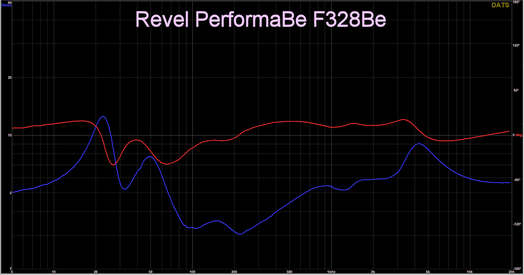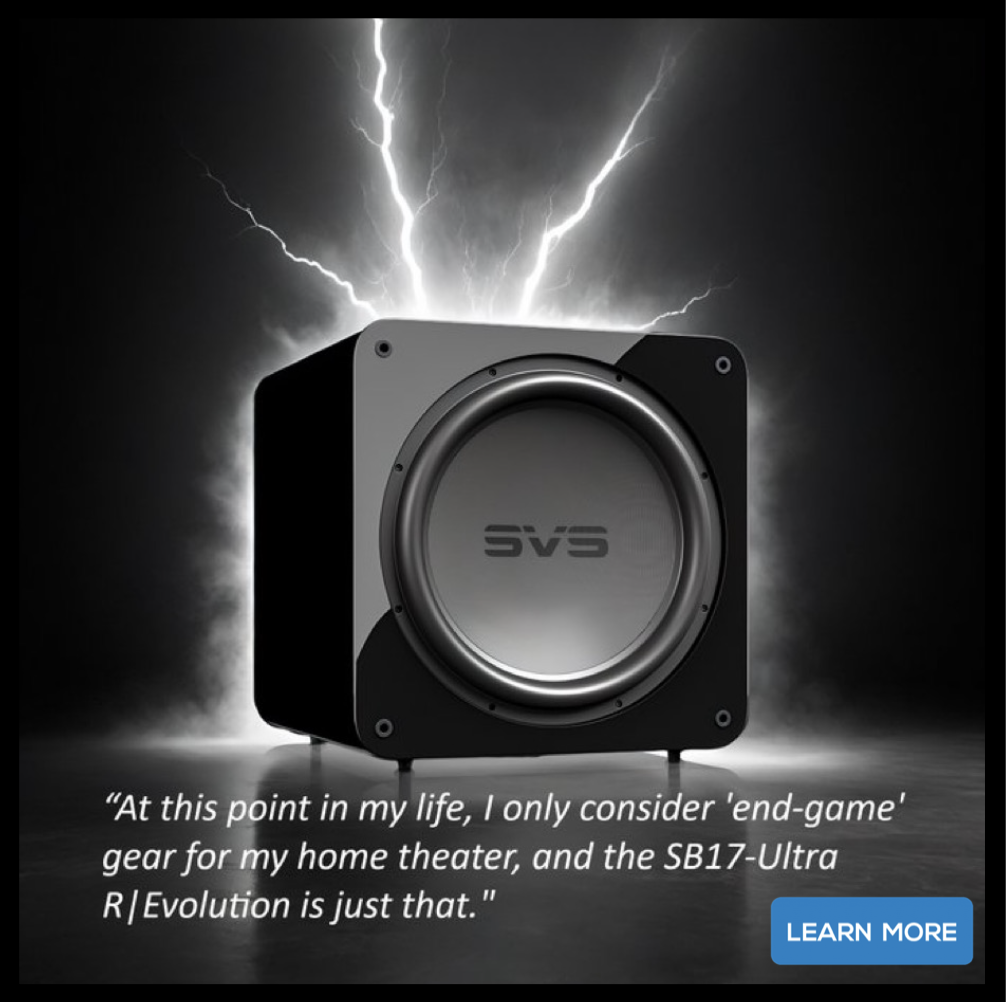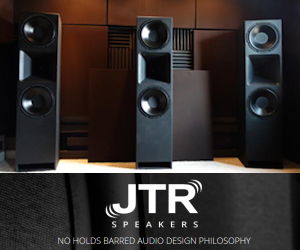AudiocRaver
Loved and Remembered Emeritus Reviewer
More
- Preamp, Processor or Receiver
- Onkyo TX-SR705 Receiver
- Main Amp
- Crown XLS 1502 DriveCore-2 (x2 as monoblock)
- Additional Amp
- Behringer A500 Reference Power Amplifier
- Front Speakers
- MartinLogan Electromotion ESL Electrostatic (x2)
- Center Channel Speaker
- Phantom Center
- Surround Speakers
- NSM Audio Model 5 2-Way (x2)
- Subwoofers
- JBL ES150P Powered Subwoofer (x2)
The Setting:
We are gathered together this 4th of July weekend for holiday festivities: barbecue from Hook's BBQ of Troy AL, and fine music delivered by way of some of the planet's finest audio equipment. “We,” in this case, refers to AV NIRVANA's Sonnie Parker, Dennis Young, and Wayne Myers. The audio equipment includes a pair of MartinLogan Renaissance 15A electrostatic loudspeakers, a pair of Revel PerformaBe F328Be tower loudspeakers, a pair of JTR Noesis 210RT tower loudspeakers, and a pair of Adam Audio A7X powered near-field monitors. The gathering place is Sonnie’s Cedar Creek Cinema in warm, beautiful southern Alabama.
Sonnie usually has some new gear in play. This visit it includes a Roon Audio server, a miniDSP SHD streaming processor with Dirac Live for our music listening, a Monoprice Monolith HTP-1 audio processor with Dirac Live for our evening cinema experiences, 2 Sanders Magtech power amps - each with the rail fuse removed from one channel, thereby only using one channel in each of 2 different stereo power amp chassis to power the left and right main speakers, and an Emotiva Eleven 13-channel power amp for the surrounds and overheads. A Panasonic DP-UB9000 disk player rounds out the lineup for Blu-ray and UHD 4K movie disks.
Subwoofers available are all from SVS: 4 SB16-Ultra for optional use with music, and 2 PB16-Ultra in addition for use with movies. That's right, all 6 of them with movies. Zowie!
Center, Surrounds, and overheads are all MartinLogan: Center, ML ESL C18 Focus; Side (2), ML EM EFX; Back (2), ML EM ESL; Height (4), ML Motion AFX.
A wide array of new treatments and furnishings are in place as well, part from GIK Acoustics, and the rest hand crafted by Sonnie himself.
Much delicious work is to follow, including a BBQ lunch of ribs, pulled pork, and chicken, BBQ beans, and dirty rice, with seven layer salad and home made chocolate eclair for desert, prepared by the loving hand of Sonnie's mom, Ann.
Thanks to Sonnie, Angie, and Gracie for hosting. There is much work to do. Just a sec', gotta loosen my belt.
We will report.
Evaluating Speakers:
The main purpose of this get-together is to evaluate speakers. Groups have been gathered numerous times to Cedar Creek Cinema for speaker evaluations which involved an array of speakers within a price range, including a half-dozen or more speaker pairs, usually towers, often including an atypical panel pair or horn-loaded pair, but usually centered on more common cone/dome designs - not to minimize in any way the amount of engineering time and effort that generally goes into any type of high-fidelity loudspeaker. With electrostatic panel speakers being Sonnie’s established personal favored listening type, and an underlying question often being, “Should one of these speakers be my next front mains pair?” there was often a pair of electrostatics in the mix.
Our evaluations have always been as thorough as is practical in an intense (but always fun), focused 3- or 4-day weekend with several experienced critical listeners and Sonnie at the helm as Chief Critic and Clock Watcher.
Our priorities and approach have been honed, but overall remain unchanged:
Four Speaker Models and Types:
We had four speaker pairs to evaluate. Each of these speaker types set up in Sonnie’s room seemed like a very different animal, making it difficult for any simple, direct comparison. It is worth noting that the soundstages we heard are different with these four designs. In the paragraphs below, there will be a few comments about this before links directing the reader to the individual speaker evaluations. Lest one be tempted to think of one design or another as the ideal soundstage generator for some reason, remember that it is the degree to which the soundstage engages the listener, along with listening purpose and listener preference, that reveals the final answer to the question, “Which soundstage is best?”
MartinLogan Renaissance 15A Electrostatic Loudspeakers. The electrostatic panel portion of the 15As is a dipole design. Sound radiates equally from the front and rear of the panel, with the rear signal's phase inverted. The front and rear waves are beamed fairly tightly, with the rear wave largely absorbed by room treatments, and the front and the phase-inverted rear signals summing to almost no radiation to the sides, up, and down. The result is very little room interaction with the 15As at panel frequencies, except for the delayed, unabsorbed portion of the rear wave.
So the soundstage is primarily that which is contained within the recording with the delays and ambiences as recorded and mixed, with some added briefly-delayed rear wave signal lending a small amount of room ambience to the sonic conglomeration. The resulting soundstage is mainly the recording's soundstage with some room influence added in.
Read the MartinLogan Renaissance ESL 15A Review HERE:
Revel PerformaBe F328Be Tower Loudspeakers. The PerformaBe are a cone and dome tower speaker, designed with controlled directivity in mind. Its curved surfaces assist the coupling of off-axis sound to the room so that there are no severe discontinuities in off-axis response. Think smooth, rather than flat, off-axis response. The room will be engaged in a big way with such a design.
The resulting soundstage is roughly equal amounts of the recorded soundstage and room influence.
Link to Revel PerformaBe F328Be evaluation:comments
Link to Revel PerformaBe F328Be evaluation comments REVISITED
JTR Noesis 210RT Tower Loudspeakers. The 210RT makes use of a coaxial compression driver coupled to a horn for delivering mids and high frequencies. With a well-designed horn, those frequencies are beamed at the listener with very little sound wrapping around the speaker enclosure to be heard by the listener as delayed, reflected sound. This type of speaker is often favored by those who have “difficult rooms” with severe asymmetries or reflective surfaces that cannot be treated easily. We think of the horn-loaded design as a “room eraser.” The influences of the room are severely limited with this design.
The resulting soundstage carries the listener deep into the recorded material’s soundstage, with little to no room influence.
Link to JTR Noesis 210RT evaluation comments
Adam Audio A7X Powered Near-Field Monitors. The A7X is a very small point-source speaker. Its design couples a great amount of sound to the room for delayed reflections, doing so with controlled-directivity in mind, so smooth off-axis response is key to its soundstage generation. This type of speaker will generally be close to the listening position.
The resulting soundstage is roughly equal amounts of the recorded soundstage and room influence, with the ratio tipped a little more toward the direct signal, the recorded soundstage, than the room influence. This ratio also applies to the lengths of reflection delays relative to the direct-to-ear signal.
Link to Adam Audio A7X evaluation comments
========
This thread is open for comments. This first post will be added to through the GTG, with links to detailed reviews for featured speakers and specific pieces of gear.
We are gathered together this 4th of July weekend for holiday festivities: barbecue from Hook's BBQ of Troy AL, and fine music delivered by way of some of the planet's finest audio equipment. “We,” in this case, refers to AV NIRVANA's Sonnie Parker, Dennis Young, and Wayne Myers. The audio equipment includes a pair of MartinLogan Renaissance 15A electrostatic loudspeakers, a pair of Revel PerformaBe F328Be tower loudspeakers, a pair of JTR Noesis 210RT tower loudspeakers, and a pair of Adam Audio A7X powered near-field monitors. The gathering place is Sonnie’s Cedar Creek Cinema in warm, beautiful southern Alabama.
Sonnie usually has some new gear in play. This visit it includes a Roon Audio server, a miniDSP SHD streaming processor with Dirac Live for our music listening, a Monoprice Monolith HTP-1 audio processor with Dirac Live for our evening cinema experiences, 2 Sanders Magtech power amps - each with the rail fuse removed from one channel, thereby only using one channel in each of 2 different stereo power amp chassis to power the left and right main speakers, and an Emotiva Eleven 13-channel power amp for the surrounds and overheads. A Panasonic DP-UB9000 disk player rounds out the lineup for Blu-ray and UHD 4K movie disks.
Subwoofers available are all from SVS: 4 SB16-Ultra for optional use with music, and 2 PB16-Ultra in addition for use with movies. That's right, all 6 of them with movies. Zowie!
Center, Surrounds, and overheads are all MartinLogan: Center, ML ESL C18 Focus; Side (2), ML EM EFX; Back (2), ML EM ESL; Height (4), ML Motion AFX.
A wide array of new treatments and furnishings are in place as well, part from GIK Acoustics, and the rest hand crafted by Sonnie himself.
Much delicious work is to follow, including a BBQ lunch of ribs, pulled pork, and chicken, BBQ beans, and dirty rice, with seven layer salad and home made chocolate eclair for desert, prepared by the loving hand of Sonnie's mom, Ann.
Thanks to Sonnie, Angie, and Gracie for hosting. There is much work to do. Just a sec', gotta loosen my belt.
We will report.
Evaluating Speakers:
The main purpose of this get-together is to evaluate speakers. Groups have been gathered numerous times to Cedar Creek Cinema for speaker evaluations which involved an array of speakers within a price range, including a half-dozen or more speaker pairs, usually towers, often including an atypical panel pair or horn-loaded pair, but usually centered on more common cone/dome designs - not to minimize in any way the amount of engineering time and effort that generally goes into any type of high-fidelity loudspeaker. With electrostatic panel speakers being Sonnie’s established personal favored listening type, and an underlying question often being, “Should one of these speakers be my next front mains pair?” there was often a pair of electrostatics in the mix.
Our evaluations have always been as thorough as is practical in an intense (but always fun), focused 3- or 4-day weekend with several experienced critical listeners and Sonnie at the helm as Chief Critic and Clock Watcher.
Our priorities and approach have been honed, but overall remain unchanged:
- Setup for razor-sharp, accurately placed, stable imaging across a continuous, expansive, engaging soundstage (SS&I) with minimal sacrifice in frequency response. The speakers should completely disappear in the soundstage. Sometimes this setup takes a few minutes, but in some cases we have spent hours on a speaker model, going to ridiculous extremes and leaving no stone unturned chasing that goal.
- Correct frequency response, if needed, with room correction DSP, using an agreed-upon target curve. Room correction invariably improves L-R speaker matching, thereby always focusing the imaging at least a little and sometimes a lot, so we apply it as a matter of course. The arguments against doing so are overridden by effective room design and treatment and by our own collective ears which agree that - under our conditions - there is always some improvement. Our tool of choice for room correction is Dirac Live, which provides the best room correction benefits with little or no downside. Any undesirable effects we have encountered result from our application of the tool, perhaps in pushing woofers too hard through emphasized bass with the target curve, for instance, and we then make needed changes to the correction. This week we generated two room corrections per speaker, one correcting the full frequency range, and the other only up to around 600 to 800 Hz, so we could compare the two. Sonnie's post covers this in detail.
- In some cases we have briefly set speakers close to the front wall of the room to satisfy forum reader requests, although the sonic result is rarely acceptable to our ears. During this eval weekend, we did not do this.
- Measure, measure, measure. Room EQ Wizard (REW) is our tool of choice. These measurements are primarily at the listening position (LP).
- Give each listener a chance to listen and evaluate, in this case we planned for almost unlimited listening time. These are sighted evaluations. We do our best to avoid comparing findings until all listening to a pair of speakers is done and all opinions are independently formed. More than once this has involved private discussion with Sonnie away from others, as Sonnie is the test implementer this weekend.
- Compare findings.
- Where warranted, reposition, remeasure, and re-evaluate. Leave no stone unturned.
- Document and report.
Four Speaker Models and Types:
We had four speaker pairs to evaluate. Each of these speaker types set up in Sonnie’s room seemed like a very different animal, making it difficult for any simple, direct comparison. It is worth noting that the soundstages we heard are different with these four designs. In the paragraphs below, there will be a few comments about this before links directing the reader to the individual speaker evaluations. Lest one be tempted to think of one design or another as the ideal soundstage generator for some reason, remember that it is the degree to which the soundstage engages the listener, along with listening purpose and listener preference, that reveals the final answer to the question, “Which soundstage is best?”
MartinLogan Renaissance 15A Electrostatic Loudspeakers. The electrostatic panel portion of the 15As is a dipole design. Sound radiates equally from the front and rear of the panel, with the rear signal's phase inverted. The front and rear waves are beamed fairly tightly, with the rear wave largely absorbed by room treatments, and the front and the phase-inverted rear signals summing to almost no radiation to the sides, up, and down. The result is very little room interaction with the 15As at panel frequencies, except for the delayed, unabsorbed portion of the rear wave.
So the soundstage is primarily that which is contained within the recording with the delays and ambiences as recorded and mixed, with some added briefly-delayed rear wave signal lending a small amount of room ambience to the sonic conglomeration. The resulting soundstage is mainly the recording's soundstage with some room influence added in.
Read the MartinLogan Renaissance ESL 15A Review HERE:
Revel PerformaBe F328Be Tower Loudspeakers. The PerformaBe are a cone and dome tower speaker, designed with controlled directivity in mind. Its curved surfaces assist the coupling of off-axis sound to the room so that there are no severe discontinuities in off-axis response. Think smooth, rather than flat, off-axis response. The room will be engaged in a big way with such a design.
The resulting soundstage is roughly equal amounts of the recorded soundstage and room influence.
Link to Revel PerformaBe F328Be evaluation:comments
Link to Revel PerformaBe F328Be evaluation comments REVISITED
JTR Noesis 210RT Tower Loudspeakers. The 210RT makes use of a coaxial compression driver coupled to a horn for delivering mids and high frequencies. With a well-designed horn, those frequencies are beamed at the listener with very little sound wrapping around the speaker enclosure to be heard by the listener as delayed, reflected sound. This type of speaker is often favored by those who have “difficult rooms” with severe asymmetries or reflective surfaces that cannot be treated easily. We think of the horn-loaded design as a “room eraser.” The influences of the room are severely limited with this design.
The resulting soundstage carries the listener deep into the recorded material’s soundstage, with little to no room influence.
Link to JTR Noesis 210RT evaluation comments
Adam Audio A7X Powered Near-Field Monitors. The A7X is a very small point-source speaker. Its design couples a great amount of sound to the room for delayed reflections, doing so with controlled-directivity in mind, so smooth off-axis response is key to its soundstage generation. This type of speaker will generally be close to the listening position.
The resulting soundstage is roughly equal amounts of the recorded soundstage and room influence, with the ratio tipped a little more toward the direct signal, the recorded soundstage, than the room influence. This ratio also applies to the lengths of reflection delays relative to the direct-to-ear signal.
Link to Adam Audio A7X evaluation comments
========
This thread is open for comments. This first post will be added to through the GTG, with links to detailed reviews for featured speakers and specific pieces of gear.
Last edited:












